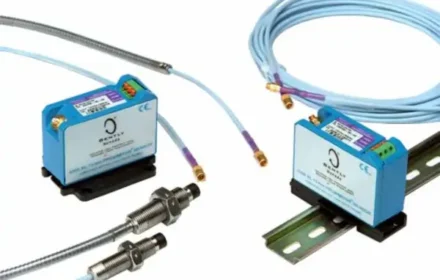Introduction
Installing a Bently Nevada 3300 XL probe involves more than just mechanical alignment. Environmental factors like temperature directly impact your measurement accuracy. Ignoring these elements during installation can lead to persistent calibration drift and false alarms. This guide explains the critical temperature and environmental factors you must consider. A proper installation ensures long-term reliability and protects your machinery. For probes designed to perform in tough conditions, explore the options at World of PLC Limited

Why Temperature is Your Critical Installation Factor
Metal expands with heat and contracts when it cools down. This fundamental principle applies to both your machine’s shaft and the probe itself. A gap you set on a cold machine will change once the machine reaches its operating temperature. This thermal growth can significantly alter the probe’s output voltage if you do not account for it. Failing to consider this will give you inaccurate vibration data from the moment you start up.
Accounting for Machine Thermal Growth During Installation
You must know the machine’s expected thermal growth to set the gap correctly. Always consult the machinery manufacturer’s specifications for this vital data. They typically provide a specific value for expected shaft rise at operating temperature. You should set your initial probe gap while the machine is off and cold. Compensate for the thermal expansion by positioning the probe to account for the shaft moving closer.

Understanding the Probe’s Own Temperature Limits
The 3300 XL 8mm probe has its own specific operating temperature range. The standard probe body can typically handle temperatures up to 250°F (120°C). The environment around the bearing housing might exceed this limit during operation. High temperatures can damage the probe’s internal electronics and insulation. You might need a high-temperature probe model for applications near steam turbines or gas compressors.
Environmental Contaminants and Probe Protection
Probes often face harsh contaminants like oil, steam, and conductive debris. These substances can create a false electrical bridge between the probe tip and the shaft. This bridge will interfere with the probe’s ability to measure the true gap voltage. Always use approved protective accessories like tip protectors during installation. Ensure the area around the probe mounting point is clean and free of debris before finalizing the setup.
Electrical Interference and Proper Shielding Practices
Industrial environments contain powerful sources of electrical noise. Variable Frequency Drives (VFDs) and large motors are common culprits. This electromagnetic interference can superimpose noise onto the probe’s signal. Always use fully shielded coaxial cables and ensure the shield is properly grounded at one end. Route probe cables away from power lines and motor leads to minimize this risk.

The Final Verification at Operating Temperature
Your installation process is not complete after a cold alignment. You must verify the probe’s gap voltage once the machine reaches stable operating temperature. Allow the machine to run for several hours to heat up completely. Then, check the DC gap voltage at the monitor’s test points. The voltage should remain within the ideal -10 to -12 VDC range, confirming your calculations for thermal growth were correct. For reliable probes that withstand thermal cycling, consider products from World of PLC Limited
Conclusion: A Small Consideration Prevents Major Problems
Accounting for temperature and environment is a hallmark of expert installation. This proactive approach separates a reliable monitoring system from an problematic one. Taking these factors into account during planning prevents ongoing diagnostic headaches. It ensures the data you receive truly reflects the machine’s condition. Protecting your critical assets starts with a precisely installed sensor.
| Model | Title | Link |
|---|---|---|
| 330103-00-10-10-02-05 | Bently Nevada Without Armor 8mm Proximity Probe | Learn More |
| 330103-00-10-10-02-00 | Bently Nevada 3300 XL Proximity Probe | Learn More |
| 330103-00-05-05-02-00 | Bently Nevada XL Probe | Learn More |
| 330105-02-12-50-02-CN | Bently Nevada Reverse Mount Probe | Learn More |







